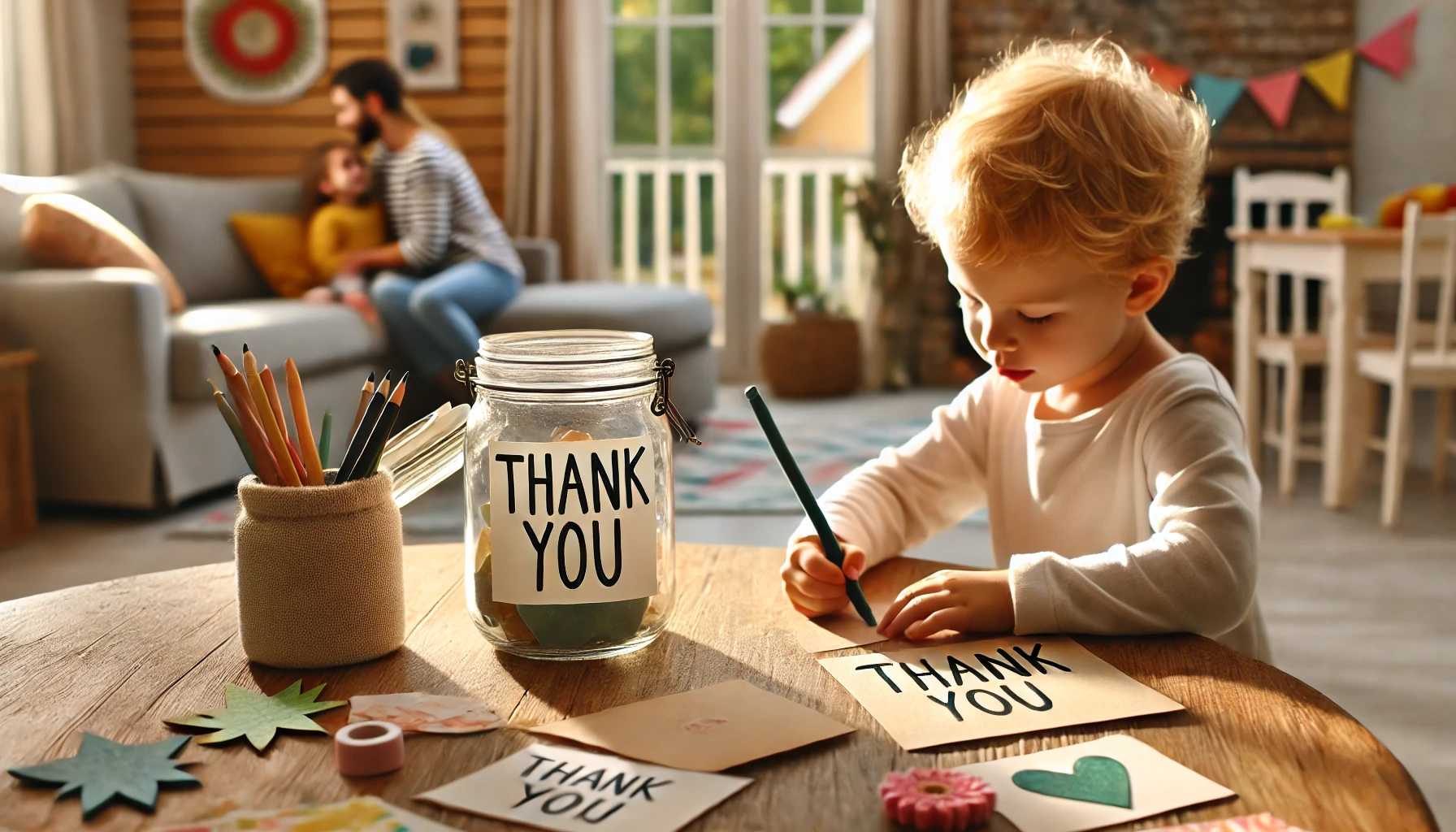How to Teach Young Children About Gratitude at Home
Gratitude is an essential value that helps children appreciate what they have, develop kindness, and build positive relationships. Teaching young children to express gratitude fosters a sense of happiness, reduces entitlement, and strengthens empathy. By incorporating simple daily practices, parents can help children understand the importance of being thankful. In this article, we’ll explore practical ways to nurture gratitude in young children.
Why Teaching Gratitude Matters
- Encourages appreciation – Helps children recognize and value what they have.
- Builds empathy and kindness – Teaches kids to acknowledge others’ efforts.
- Promotes a positive mindset – Helps children focus on the good in their lives.
- Strengthens relationships – Encourages thankfulness in interactions with family and friends.
- Develops lifelong happiness habits – Teaches children to find joy in everyday moments.
1. Model Gratitude in Everyday Life
Children learn gratitude by observing how adults express appreciation.
Activity Idea:
- Say “thank you” often, even for small acts of kindness.
- Express appreciation: “I’m so grateful for this delicious meal we made together!”
- Talk about things you are thankful for daily.
What Kids Learn:
- How to recognize and express appreciation
- The importance of valuing what they have
- Positive ways to interact with others
2. Start a Daily Gratitude Ritual
Making gratitude a habit helps children develop a thankful mindset.
Activity Idea:
- During meals or bedtime, ask, “What was the best part of your day?”
- Keep a gratitude jar where kids write or draw things they are thankful for.
- Use a gratitude calendar where children list something they appreciate each day.
What Kids Learn:
- Reflecting on positive moments
- Finding joy in everyday life
- Making gratitude a routine practice
3. Teach the Value of Saying “Thank You”
Verbalizing appreciation reinforces the habit of gratitude.
Activity Idea:
- Encourage children to say “thank you” when receiving gifts or help.
- Role-play situations where expressing gratitude is appropriate.
- Write simple thank-you notes or drawings for family and friends.
What Kids Learn:
- The importance of acknowledging kindness
- How words can make others feel appreciated
- The habit of expressing gratitude naturally
4. Read Books About Gratitude
Stories help children understand gratitude through relatable characters.
Activity Idea:
- Choose books that highlight thankfulness and appreciation.
- Pause while reading and ask, “How do you think the character feels when they receive kindness?”
- Discuss ways the story connects to their own experiences.
What Kids Learn:
- How gratitude makes people feel happy
- The impact of appreciation in relationships
- Ways to express thankfulness in real life
5. Encourage Acts of Kindness
Helping others fosters a sense of gratitude and generosity.
Activity Idea:
- Donate toys, clothes, or food to those in need.
- Encourage children to help a friend or family member with a small task.
- Create a kindness challenge where they do something thoughtful each day.
What Kids Learn:
- The joy of giving and helping others
- How gratitude connects to kindness
- Empathy and appreciation for what they have
6. Show Gratitude for Nature and the World Around Them
Helping children appreciate the environment fosters mindfulness and awareness.
Activity Idea:
- Go on a nature walk and talk about the beauty of trees, animals, and the sky.
- Encourage children to care for plants and animals as an act of appreciation.
- Have a “gratitude for nature” day where kids draw or write about their favorite outdoor experiences.
What Kids Learn:
- Appreciation for the world around them
- Respect for nature and the environment
- How to find gratitude in simple things
7. Celebrate Effort and Hard Work
Teaching children to appreciate effort helps them value achievements and persistence.
Activity Idea:
- Praise effort, not just results: “I love how hard you worked on this puzzle!”
- Recognize others’ contributions, like thanking a sibling for helping clean up.
- Encourage children to say thank you to teachers, coaches, or caregivers.
What Kids Learn:
- Gratitude for hard work and dedication
- The importance of recognizing others’ efforts
- Appreciation for teamwork and cooperation
8. Be Patient and Consistent
Gratitude takes time to develop, so gentle reminders and encouragement are key.
Activity Idea:
- If children forget to say “thank you,” gently remind them: “How do we show appreciation?”
- Reinforce gratitude daily with small reminders and discussions.
- Celebrate progress by acknowledging when they show gratitude on their own.
What Kids Learn:
- That gratitude is a lifelong skill
- How to naturally express appreciation
- The emotional benefits of being thankful
Final Thoughts
Teaching young children about gratitude helps them develop kindness, appreciation, and a positive outlook on life. By modeling gratitude, encouraging daily reflection, and fostering acts of kindness, parents can create an environment where thankfulness becomes a natural and joyful habit.
